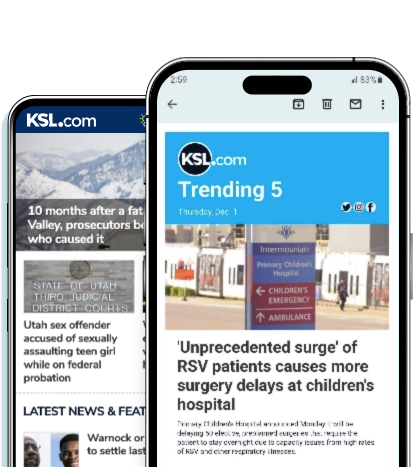Estimated read time: 4-5 minutes
- Researchers at the University of Utah have developed a robotic device for retinal surgery.
- The robot enhances precision by scaling down surgeon movements and compensating for hand tremors.
- The device, tested on pig eyes, aims to improve surgical outcomes and enable advanced procedures.
SALT LAKE CITY — When performing surgery on the retina — one of the smallest, most delicate parts of the human body — the margin of error is virtually nonexistent.
Surgeons must account for patients' breathing, snoring, and eye movements, along with their own involuntary hand tremors, while they work on a layer of cells less than a millimeter thick.
But what if that margin of error could be eliminated by a highly advanced robotic surgery device that gives surgeons "superhuman hands?"
That's exactly what researchers and surgeons at the University of Utah's John A. Moran Eye Center and the John and Marcia Price College of Engineering have collaborated to create, and it could forever change the way retinal surgery is performed.
"A lot of the surgery that I do is, you know, getting to the limits of what a human can do in terms of our tremor and movement of the patients and other things," said Paul Bernstein, professor of ophthalmology and visual sciences and retinal surgery specialist at the Moran Eye Center.
Bernstein was approached by Jake Abbott, a professor in the U.'s department of mechanical engineering and director of the U.'s robotics center, with a potential solution to this problem.
"We start with a robot that can take 1 micrometer steps. So, if you picture a millimeter, a micrometer is one thousandth of a millimeter," Abbott said. "Our robot can take steps of one thousandth of a millimeter in any direction, and it can rotate ... it can manipulate an instrument like a hand would."
The robotic device is mounted directly to the patient's head using a helmet so the subtle — and sometimes not so subtle — movements of the patient's head are compensated for, keeping the eye still from the perspective of the robot.
The robot also scales down the surgeon's movements, measured using a handheld robotic device known as a haptic interface, to the much smaller surgical site within the eye, compensating for hand tremors along the way.
"Think of it like a joystick type device, but it allows the full movement that you would have with your hand, and then we tele-operate the robot that's on the patient's head. So, we don't ever actually want a human hand to come in contact with the robot at all, directly," Abbott said.
In the context of retinal surgery, Bernstein would be able to change the scaling of the robot to 80 to 1. So, if Bernstein moved 1 millimeter, the robot would move 1/80th of a millimeter, making retinal surgery more precise and safe.
"Things like tremor just become not important anymore because you scale it to oblivion," Abbott said.
While still in the testing stages, Abbott and Bernstein said the device aims to improve outcomes for patients and support cutting-edge procedures, including the delivery of gene therapies for inherited retinal diseases.
The researchers successfully tested the robot using enucleated pig eyes, and the results were published last month in the journal "Science Robotics." The study was funded by the National Institutes of Health.
Since the device has yet to be approved for operation on human subjects, testing it required a human volunteer fitted with special goggles that allowed the pig eye to be mounted just in front of the volunteer's natural eye. This allowed the researchers to test the robot's ability to compensate for head motion and correct for hand tremors, all while operating on animal tissue with no risk to the volunteer.
Through this experiment, the surgeons achieved higher success rates while using the surgical robot device to perform subretinal injections while also avoiding eye complications.
"Robotics has taken over a lot of general surgery already," Bernstein said. "For eye and retina surgery, it's very ripe for having some of the same advances and really improving what we can do and getting beyond the excellent surgery that we can already do now."
Moving forward, Abbott said he's excited by the possibility of advancing robotics to the point of automating certain tasks of eye surgery.
Additionally, Abbott and Bernstein both said they were thankful for the National Institutes of Health funding that made this breakthrough possible.
"Lately, it's (the National Institutes of Health) getting a little bit of a bad rap, for some reason. If you want this kind of technology to advance, then be thankful that our tax dollars go to the NIH that then gets pushed through competitive peer review to projects like this," Abbott said. "It's very frustrating that people are suspicious of it in an irrational way."











